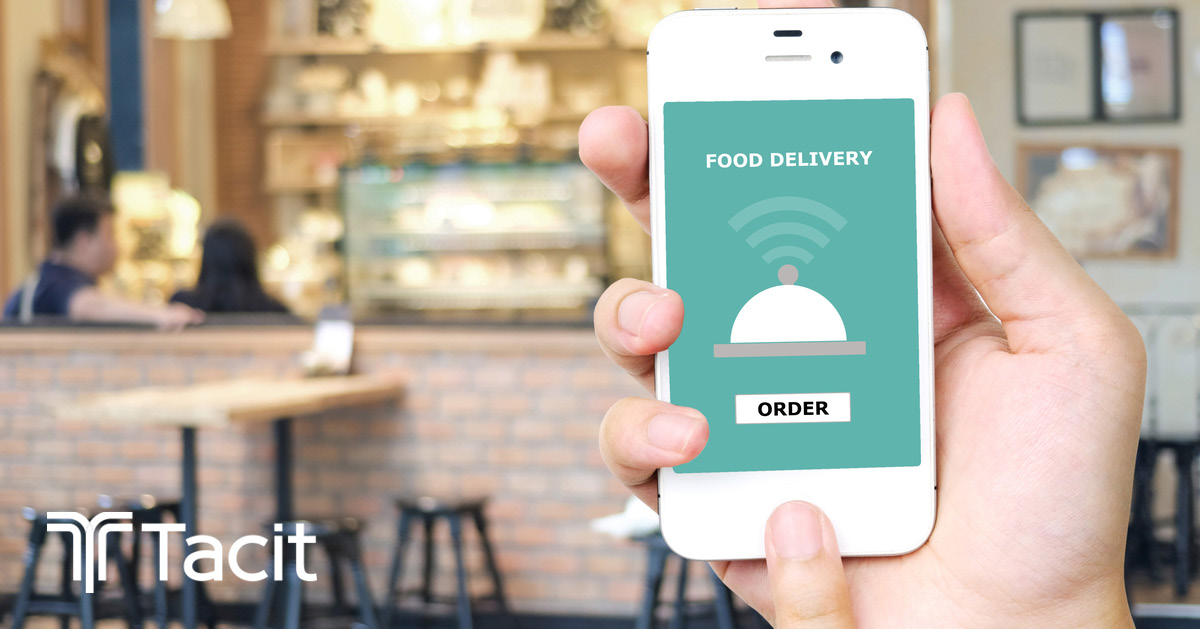
02 Jun 3rd Party Food Delivery Aggregators vs. Your Own Branded App, Is It Really One vs. the Other?
Over recent years, restaurant trends have shifted away from traditional, on-premise dining, and as explained by a Tacit client, that change marked a need for re-evaluation of whether to use the 3rd party food delivery aggregators or to build a branded app:
“We are seeing less in-restaurant visits and more takeout, drive-through, and delivery business. So, do we really want to be making investments in restaurants when there are fewer people dining in and more people ordering online through our branded app and through the third-party apps?”
The short answer is no, but in the age of digital food ordering systems, it is never quite that simple. And, restaurateurs need to understand why.
Why Using a Single Delivery Approach May Fail
Using a single delivery approach comes with a few caveats. First, it limits the customer base to only those that would use a specific app or choose to order from the branded app. It eliminates the opportunity to convert 3rd party app users into paying customers and vice versa. Secondly, a single food delivery approach may also lead to higher expenses resulting from the exuberant commissions charged by 3rd party servicers. In some cases, such commissions may rise to more than 30%, creating additional problems for restaurants struggling with thin profit margins.
Combined Use of 3rd Party Food Delivery Aggregators and Branded Apps Maximize Profitability
The best approach to building a digital ordering strategy depends on the unique demographics of the area and what customers want. Restaurants need the data to justify any strategy and without a clear, data-driven direction, the best idea is usually to create a combined approach. Combining both 3rd party food delivery aggregators with branded apps targets the largest possible customer base. Unfortunately, 3rd parties may come with higher commissions and even increase the risk to the business through bad publicity. So, the question becomes, “Which strategy is most likely to please customers without sacrificing brand value?”
Well, research does indicate that customers would prefer to order directly from a restaurant through a branded app and not 3rd party food delivery aggregators, found a Tillster survey of more than 2,000 customers found, results published by QSR Magazine:
“There are many reasons to install direct delivery as Chipotle did in August. From a convenience standpoint, it lets customers access the service without ever leaving a restaurant’s app or website. In Chipotle’s case, the brand could also curate the experience, like offering the ability to customize delivery purchases like order-ahead ones.
Tillster’s data found customers want to interact directly with the restaurant. They appreciate the ease of use and familiarity factor. Menus are configured and custom to the brand and customers’ past orders are saved. This all returns to the convenience factor, best met by creating a seamless ordering experience.”
Essentially, it is never one or the other, nor is it a combined-all-the-time approach that achieves the greatest results. It’s complicated and requires an evaluation of what’s best for the unique needs of your restaurant.
Additional Considerations for Building a Successful Digital Ordering Strategy
Given the complexities of online ordering, restaurateurs should also take these considerations when choosing which delivery strategy will work best:
- Consider the use of white label 3rd party food delivery aggregators.
- Take advantage of all available 3rd party food delivery aggregators in your area, not just a single app.
- Give in-store customers the ability to see and order food from a mobile branded app or website.
- Use mobile order-ahead app features to leverage curbside pickup without paying extra commissions to 3rd parties.
- Be clear and consistent in marketing messaging for the best ways to order and maximize value to restaurant-goers.
- Look beyond the home or office deliveries, taking advantage of public spaces, such as parks or sporting arenas, to add value.
Discover What Your Restaurant Needs With the Right Technology Partner
A true third-party, e.g., Tacit, will help a restaurant review its current use of delivery and determine what approach works best. Restaurateurs can go it alone and follow the aforementioned tips. However, working with an expert at Tacit streamlines the process and helps to minimize losses and disruptions. Find out how to get started by visiting Tacit online today.

Pingback:4 Fast Facts About Mobile Order-Ahead Apps for 2021
Posted at 12:48h, 30 December[…] use of digital ordering and third-party food delivery options has kept chains alive where others have struggled. That is a clear indicator that these […]